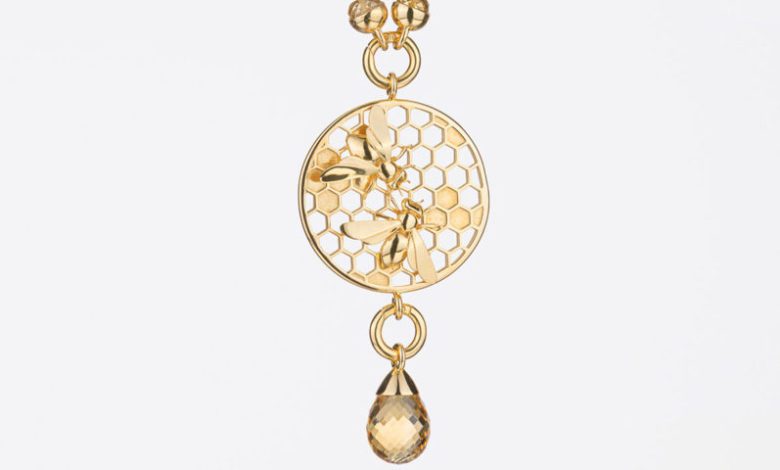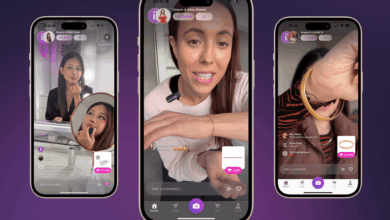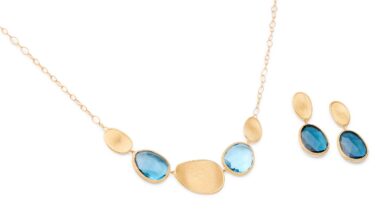The YouTube Jewellers
While self-taught jewellers are nothing new, learning the tricks of the trade through online video content is a new twist for the 21st Century.

Register to get 1 more free article
Reveal the article below by registering for our email newsletter.
Want unlimited access? View Plans
Already have an account? Sign in
Name: Daryl Adams
Company: Adams Handcrafted Jewelry
Website: www.adamshandcraftedjewelry.com
Established: November 2014
Location: Fort Worth, Texas USA
Did you do any other form of training?
No formal training other than one wire weaving class when I first began by a well-known wire weaving artist.
What the easiest thing about this method of learning?
I would say that the easiest thing about this type of learning is the ability to learn at your own pace without the regimen and structure of a traditional learning environment.
Would you do it again?
Certainly, it has been a great way to learn and mind-expanding journey. I continue to learn using these methods on a daily basis.
Would you ever consider ‘traditional training’?
Under the right circumstances I might, but I would probably be more inclined to do so as a young person than now that I’m older.
Were the videos easy to locate?
Video training is extremely easy to locate on such websites as YouTube, simple keyword searches produce literally hundreds, if not thousands of videos.
Were the videos easy to follow?
Most videos are easy to follow and very in depth. Most ‘instructors’ are very knowledgeable in their respective areas of expertise and explain terms and techniques in simple to follow steps.
Did you pay for the videos?
While I have paid for a few written tutorials, I have not paid for any videos as there are a ton of free resources on YouTube.
Name: Rodica Frunze
Company name: Sky-And-Beyond Jewelry
Website: www.sky-and-beyond.com
Established: 2012
Location: Nanaimo, British Columbia, Canada
Why did you decide to go down the self-taught route?
I started making wire wrapped jewellery as a hobby as I was studying for a medical licence. This did not leave time for a formal traditional training in jewellery making or jewellery design.
What skills did you learn?
Once I developed an in-depth understanding of the properties of the metals, metal clay provided the answer to my question: “How do I integrate so many various forms on such a small scale?”
How long did it take?
I’m still in the process of learning. My learning curve was pretty abrupt, as I started receiving requests for custom pieces. This motivated an intense year of research and testing to produce pieces that I felt comfortable accepting payment for. After a couple of years, I started to submit my works to jewellery design contests – within three years, I won the Saul Bell Jewelry Design Award metal clay category.
Do you think your journey has been easier or harder than those who are traditionally trained?
Probably easier, as I didn’t have to deal with the rigidity of the ‘must do’ or ‘must be’ which is a compulsory component of any ‘traditional education’. For sure it was very entertaining, in absence of a mentor, I had the opportunity to experiment a lot and make some very lucky mistakes, which later transformed into techniques.
What was the hardest thing?
When confronted by finding the root cause of my errors, the lack of a mentor meant I had to find troubleshooting solutions by myself. Social media helped, people post their failure experiences and what worked for them. However, this can also provide misleading information.
Would you ever consider ‘traditional training’?
If I need some highly specialised skill, then yes. However, with the network of highly skilled people, the chances are that I can get access to the information.
Name: Allison Korn
Company Name: Roots in Silver
Website: www.rootsinsilver.com
Year of establishment: 2014
Location: Brattleboro, Vermont
Why did you decide to go down the self-taught route?
When I discovered metal clay, I was living in Ecuador, where there were no classes or workshops. I was a mum to two young children and trying to finish my master’s thesis in Anthropology. I tried to apprentice with a silversmith, but could not commit enough time.
On a trip to the US I bought 50 grams of metal clay and beginners’ metal clay books and decided if I could make a piece of jewellery, I would become a jeweller. I wanted to find a way to learn this craft that fit my schedule. I found a metal clay class by Jenny Vestal on Craftsy.com and started using it, with the books. I made a few pieces of jewellery out of those first 50 grams and was hooked.
What skills did you learn?
Most importantly, I learned not to be afraid of taking the clay out of the package! I learned to work the clay, create textures, make embellishments, sand and refine, and fire with a torch. Later I switched to firing in a kiln.
How long did it take?
I still consider myself to be learning; for example, I just taught myself how to do turquoise inlay.
Did you do any other form of training alongside it?
About six months after I took the online class, I moved to Vermont, and attended a two-day metal clay workshop with Lis-el Crowly.
What was the hardest thing?
For me the hardest thing was that I was jumping into a field in which I had no experience. In the beginning I had very little confidence, and learning on my own in a ‘non-official way’ didn’t make that easier.
Name: Kate George
Company Name: Little Silver Star
Website: www.littlesilverstar.co.uk
Year of establishment: 2014
Location: Bristol, England
Why did you decide to go down the self-taught route?
When I was at school I got told that I wasn’t creative and it knocked my confidence. I left school at 16 and went straight into an office junior position. I had been thinking that I would like to go to university but because of how I was made to feel at school, I never dreamed that I could do a fashion design degree so I did a part time business HNC to get onto the Fashion and Textile Management BA hons at Nottingham Trent University.
Although the degree was not design-based we did touch on various aspects of design and I realised my passion. Whilst I was in my second year I went to Morocco on holiday, visited beautiful jewellery shops and something clicked. When we got home I ordered a beginners’ beading kit from eBay and found lots of tutorials on YouTube. I would never be able to afford another degree or paid for training.
What skills did you learn?
I started off with beading and bead weaving and then went onto wire wrapping and macramé. It was about three years before I started learning silversmithing skills, giving myself a quota every month to collect tools. Beaducation, Soham Harrisson and Nancy Hamilton’s videos were invaluable for me.
Do you think your journey has been easier or harder than those who are traditionally trained?
In some ways easier as I am not restricted by the confinements of learning traditional methods, because I couldn’t ask questions I could create my own way of doing things. But this I suppose could also be a con as sometimes when things become difficult it could get a little frustrating. I have learned a lot by trial and error and melting a lot of things. This is where my online community really come in. Sometimes I will learn a little trick from someone who has been traditionally trained, so its things like that that I have missed out on.
What was the hardest thing?
Not having people to ask questions to and you can’t find a video about it. Someone asked me to do a locket for them and I couldn’t really find any tutorial but I really wanted to challenge myself. It was actually a horrendous time and I eventually found a blog post from the Ganoksin project and although it took me seven attempts, I made a locket from scratch. But I can’t look at lockets now without feeling sick. Another hard thing is the mindset that you are somehow a fraud because you haven’t had any formal training.
Do you predict this will be the way more jewellers are trained in the future?
I think that with the rising costs of education more people will definitely choose to go the self-taught route.
Name: Loân Fandino
Company Name: Loan Sara Jewelry
Website: www.loansara.com
Year of establishment: 2014
Location: Switzerland
Why did you decide to go down the self-taught route?
I have not really decided to become self-taught. I simply followed my instinct and my desire to create what I imagined in my head.
How long did it take?
I began to draw seven years ago but I actually started three years ago for the realisation and production of jewellery.
Do you think your journey has been easier or harder than those who are traditionally trained?
I think it is more difficult because it is not always easy to find the right contacts to help us realise our project. As a result, you lose more time and money than someone who knows this universe well.
What was the hardest thing?
To find the right information and contacts in order to move forward in this project.
Would you do it again?
Yes, for me it was – despite hard times – an extraordinary adventure and a fabulous learning about oneself.
Would you ever consider ‘traditional training’?
Today not because I finally managed to realise my dream but if I had known the time it was going to take me, certainly.
Do you predict this will be the way more jewellers are trained in the future?
No, I do not think so. A good basic training is certainly always more advantageous especially for the younger ones.
Name: Victoria Liddell
Company Name: VL Jewellery
Website: www.vljewellery.com
Year of establishment: 2014
Location: Jersey, Channel Islands
Why did you decide to go down the self-taught route?
I taught myself to silversmith because I live on an island and we don’t have any classes over here. I would have liked to do a silversmith course but it worked out being really expensive to fly to the UK.
How long did it take?
I have been making jewellery for four years, been a silversmith for around three – I don’t think I will ever stop learning!
Did you do any other form of training alongside it?
I did go to a London jewellery school six years ago and attended a course which included basic bead jewellery skills and fine silver clay production.
What skills did you learn?
I have self-taught silversmith skills, stone setting including bezel, tube and currently learning flush setting. I have also worked with gold a few times where a customer has made a request.
Do you think your journey has been easier or harder than those who are traditionally trained?
I would say harder because I always questioned myself and that made me lack confidence in my skills. There were some days I just couldn’t get the solder to flow and I was like, “What am I doing wrong?”
What was the hardest thing?
I have struggled with flush setting and may of learnt quicker if I had a tutor. Also, I remember making my first ring and being scared of melting the silver.
Would you ever consider ‘traditional training’?
Yes; I would love to attend a stone setting course.
Were the videos easy to locate?
I found it easy, especially on YouTube. I would recommend Soham Harrison. He has a lovely calming voice (which you need sometimes) and I find his videos easy and clear to follow.
Did you pay for the videos?
I did pay for a couple of online courses, a basic soldering class and stone setting on Craftsy. I have also watched some videos on At The Bench which has a great selection.
By Shekina Tuahene. This article first appeared in the September 2017 issue of Jewellery Focus







